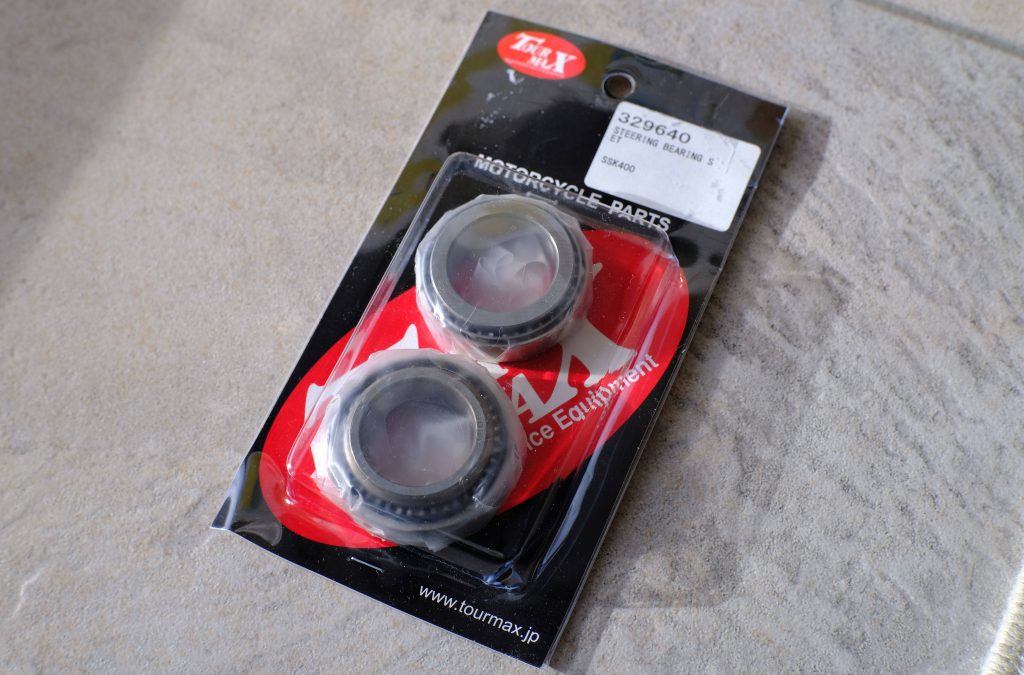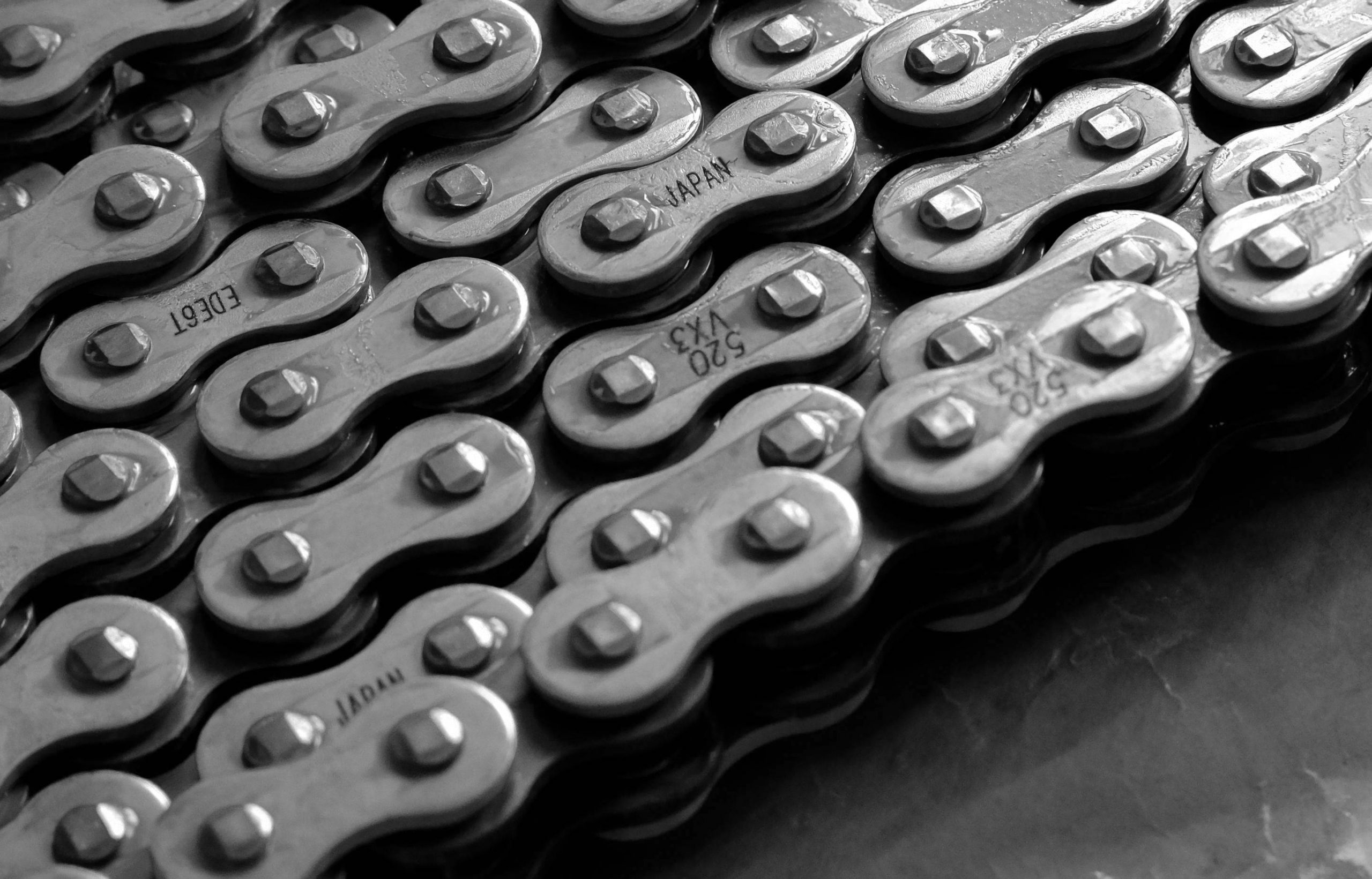Thus far, I have religiously changed the oil and filter every 5,000 km, changed the coolant once, had the valves adjusted once, replaced the front and rear brake pads, and changed the tires. However, after 2 years and 24,000 km of riding, time has come for a major service.
For more thoughts on the Versys-X, read my long-term review HERE.
Spark Plugs
I recently found out that Kawasaki recommends replacing the spark plugs every 12,000 km. This reminded me that I am still running the stock plugs… (note to myself: read the owner’s manual from time to time) Changing the plugs is a time-consuming affair. The gastank needs to be removed, since the plugs sit directly underneath it. And I am guessing the fairings need to be removed first in order to get to the tank. It’s not difficult, just a major PITA.
The engine still runs smooth as ever, but the plugs have now done double the recommended distance. The Versys-X comes with convential NGK CR8E plugs. I am upgrading to the NGK CR8EIX, the equivalent Iridium plug. Iridium plugs are twice as expensive (about US$ 30 for a set), but also last twice as long. I intend to keep the Iridiums at least until the odometer hits 70,000 km.
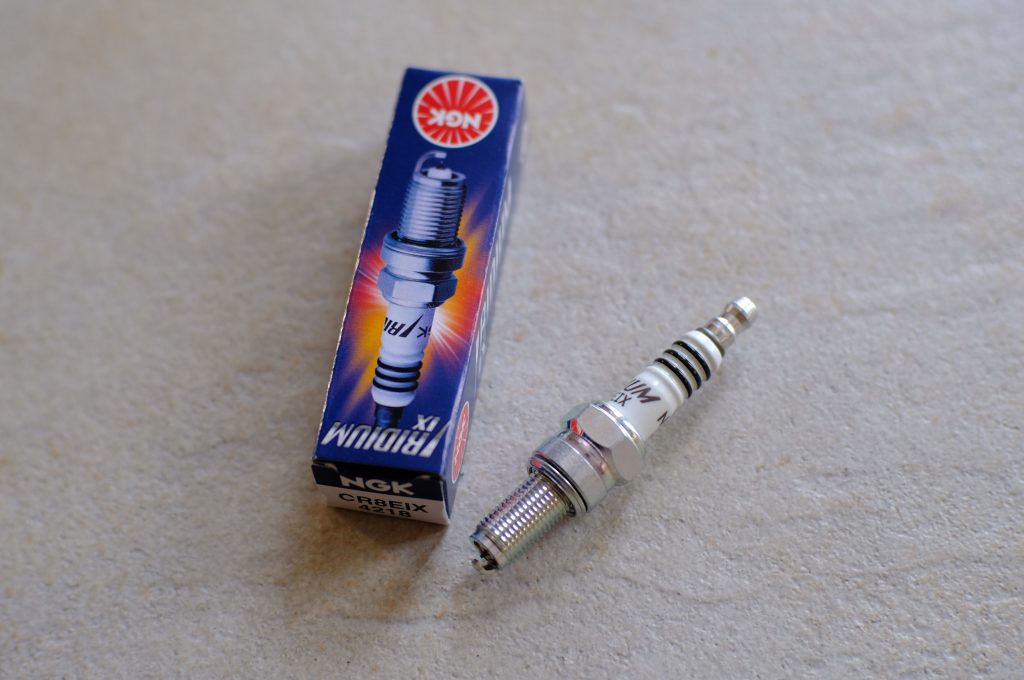
Chain
It’s very difficult to predict the life of a drive chain as many factors come into play (chain quality, climate, environment, riding style, maintenance, etc.). The factory chain isn’t known for its durability. Some people have reportedly replaced it as early as 5,000 km. I know the spoked wheels on the Versys are from DID, but the chain clearly isn’t. I will replace the factory chain with a DID 520 VX3. This chain is rated up to 800cc, so it will have no trouble handling whatever I throw at it.
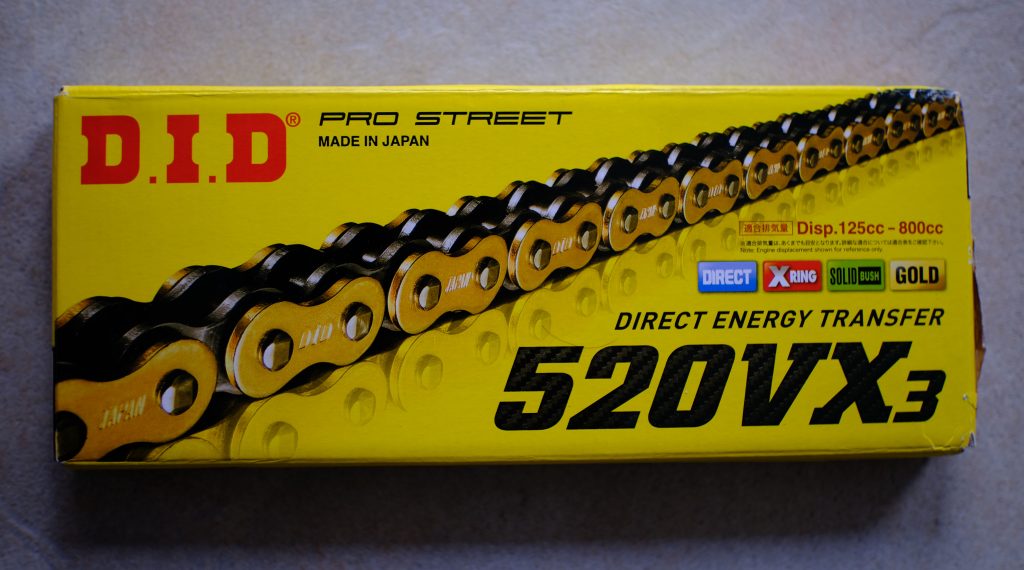
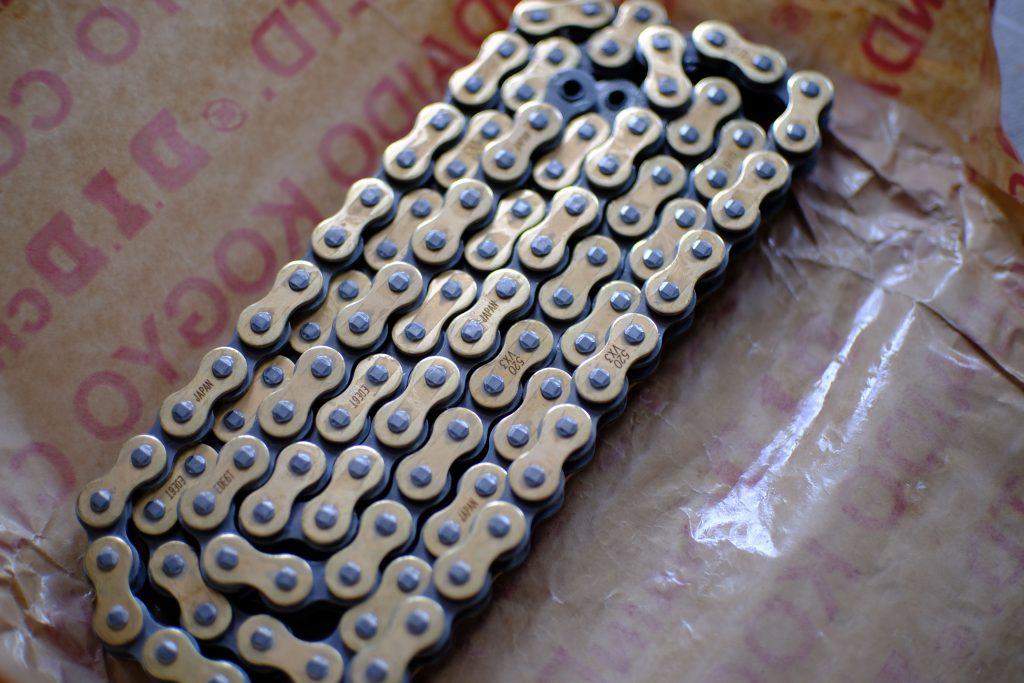
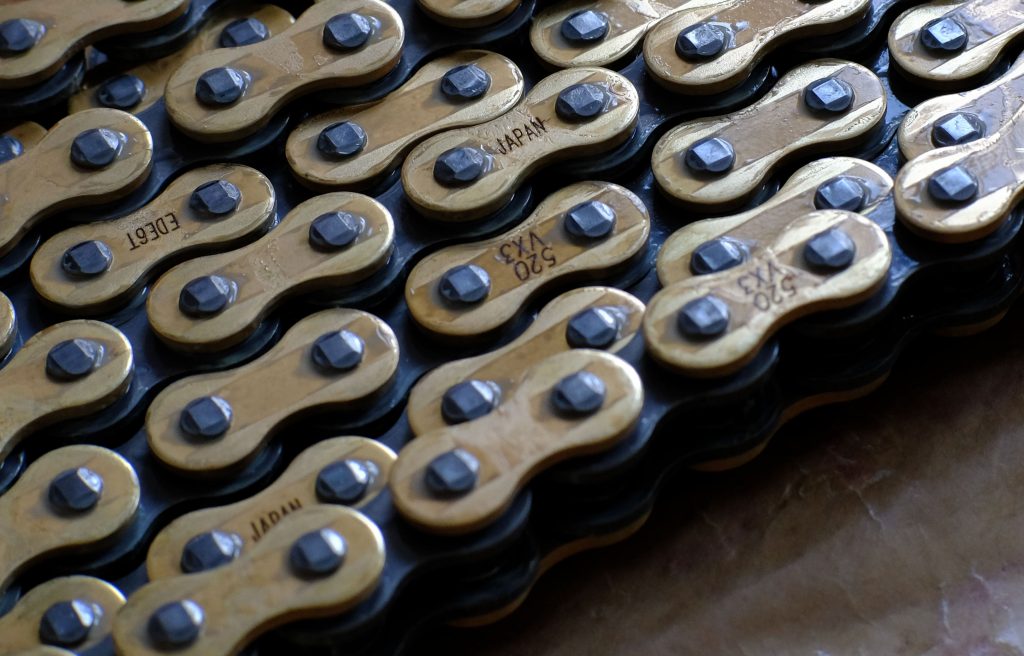
The chain came with a clip and rivet master link. Now, I already had a VX2 rivet master link laying around. I compared it to the VX3 master link and they seem to be virtually identical in every aspect. Whether you should use a rivet-type over a clip-type master link is a much-debated topic. My personal preference goes to a rivet master link.
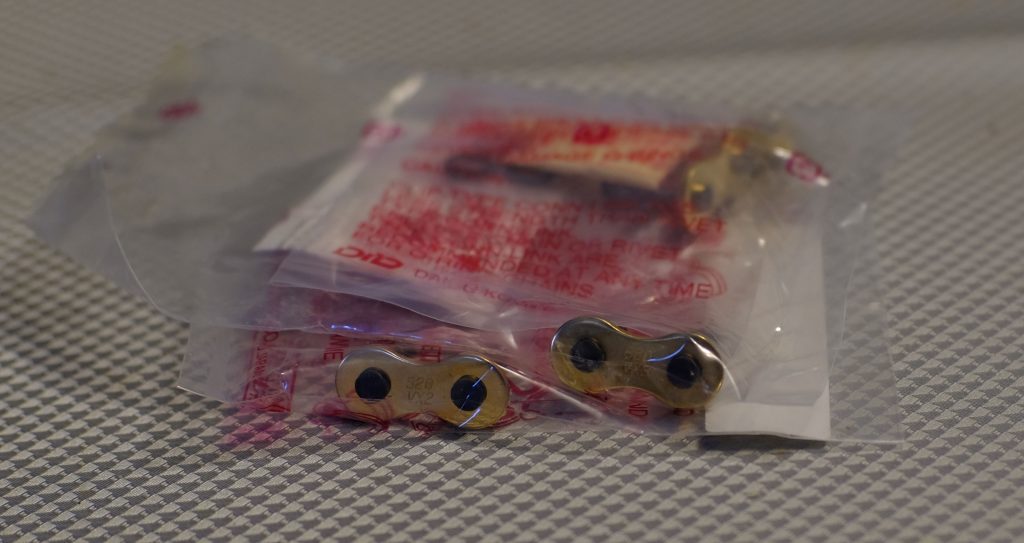
I’ll probably use my rivet VX2 master link when fitting the chain and keep the VX3 clip master link as a spare. It’s always easier to install a clip master link when stranded in no-man’s-land with no specialty tools in hand.
Sprockets
There’s an urban legend saying that it’s best to change the sprockets and the chain at the same time. Unless your chain failed prematurely, change the sprockets at the same time. My chain and sprockets have been through hell and back (dust, water, lava… although I am not sure about the latter). I am quite surprised everything still looks the way it looks at this point. Sprockets are cheap, so it doesn’t make sense to skimp on such a small expense.
I will replace everything at the same time. I have decided to go one tooth up for the counter sprocket to lower the revs at highway speeds. So, the final drive will be 15 x 46 as opposed to 14 x 46 stock (7% taller). Alternatively you can go with 14 x 43 which has the advantage of keeping the stock 14-teeth counter sprocket (stock sprocket is damped). Anything other gear ratio will throw a CEL. You can find the part numbers below.

Steering Head Bearings
In the past couple of months the bike has been developing a tiny bit of play in the steering. I can feel it when coming to an emergency stop. On some rare occasions there’s a bit of wobble, too. It’s probably just a matter of tightening to spec.
However, just to be on the safe side, I have purchased a set of tapered steering head bearings. When searching for steering head bearings on Google, you’ll probably come across “All Balls Racing”. At first, it seems like they’re pretty legit but then I read some reviews. Apparently, these are just relabeled chinese bearings. So I decided to spend a bit more on a Japanese bearing set. I’ll let you know how this works out.
